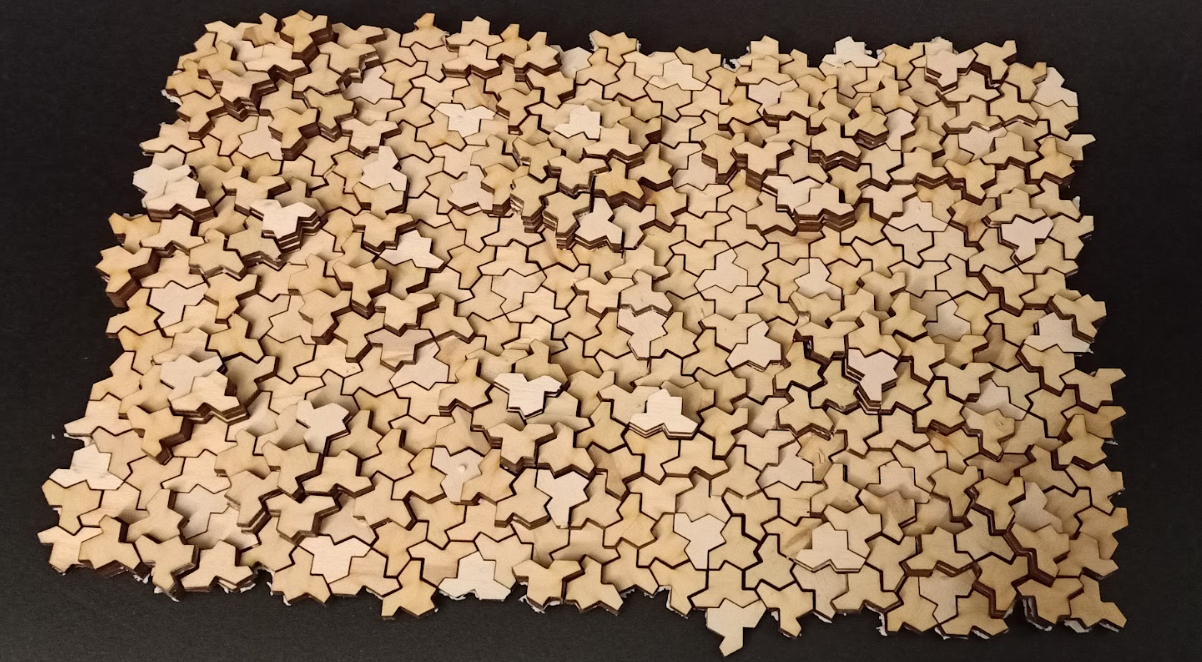Einstein's Terrain
This project was created for the Playful & Creative Science course of the Creative Intelligence and Technology programme at Leiden Univeristy.

During this course, we were challenged to investigate a recent scientific study and create a product based on it. Working in a team of two, my partner and I became interested in a specific geometric shape. Typically, shapes fall into two categories: those that can recursively stack upon each other to form repeating patterns and those that cannot be slotted into each other recursively. For a long time, it has been a mathematical challenge to find a shape that can tile a plane completely without creating a repeating, recursive pattern. However, at the time of writing this paper, we found that a specific tile known as the Einstein tile had recently been discovered that achieves exactly this!
We were very interested by the potential use of this shape in map design. Typically, maps utilise a grid system with symmetrical shapes, such as squares or hexagons, to plot location. We were curious to see how a map would look using the Einstein tile instead, which, due to its asymmetrical nature, would create an "Einstein Terrain": a map surface with highly organic, non-repeating structures.
To explore and showcase this concept, we laser-cut these tiles and assembled them like puzzle pieces, experimenting with both two-dimensional layouts and stacking them to simulate a three-dimensional terrain.
See here to read the entire process.
Media



